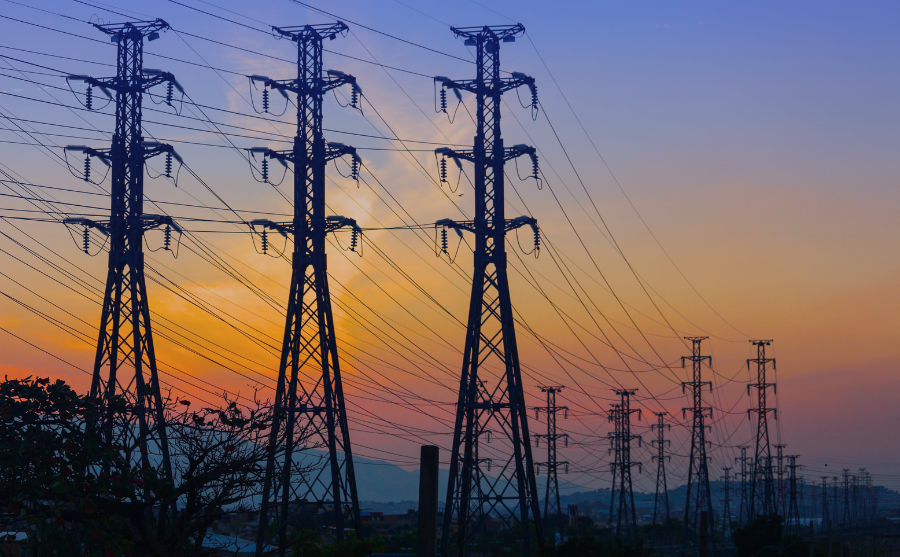

9/29/2025



The electricity supply chain is a complex system of processes and infrastructure that brings electricity into our homes and enables us to use it for our daily activities. Understanding how the supply chain works is key to appreciating the intertwining and importance of electricity in the lives of all of us and to assessing the challenges and opportunities it presents, particularly in the context of the transition to more sustainable energy sources.
The electricity supply chain has four levels:
The production
Unlike gas and water, which are already present in nature and only need to be extracted, electricity has to be produced artificially (there are natural sources of electricity, but the recovery of electricity, for example, from lightning is far from simple, due to the very high voltage with which it strikes the ground).
There are several sources from which electricity can be produced:
The transmission
Once generated, electrical energy must be transported from the places of production to the centres of consumption. It is at this point, therefore, that the transmission process begins.
The transmission of electricity is usually carried out using a network of high-voltage power lines (also called transmission grid), characterised by towers or poles and conductor cables connecting the generation sources to substations and, subsequently, to local distribution networks.
During the transmission process, in order to avoid losses, electricity is first of all transformed into voltage. High voltage, in fact, reduces the amount of current required to transfer electricity, thereby decreasing losses caused by cable resistance. The voltages at which networks can operate vary: 110 kV, 220 kV, 400 kV are some of the most common examples, but there are also networks that operate at higher voltages (up to 765 kV). In order to transfer electricity over very long distances, however, it is also possible to use direct current transmission, the main advantage of which is the lower losses compared to alternating current.
In Italy, the electricity transmission and dispatching functions are entrusted to the company Terna, which operates under a natural monopoly and within a regulated market.
The distribution
The third stage of the electricity supply chain is distribution, which brings electricity from transmission nodes to homes, offices and industries via local networks.
Distribution takes place in medium voltage (reduced values of 10kV, 15kV, 20kV) and low voltage (values of 230V and 400V). The transport of electrical energy at this juncture, for mainly technical and economic reasons, takes place in the form of three-phase alternating current, but for other special purposes (such as electric traction) it is also possible to see transport on direct current.
Depending on the voltage value transported, it is possible to have lines
The voltage, however, is not necessarily constant during the transmission and distribution process. In fact, depending on the needs of the system, it is usual to convert the voltage, increasing or decreasing it, so that it reaches the users. The equipment that allows such changes are called transformers, while the places where voltage levels change are called electrical workshops. The latter are a complex of equipment contained in one or more outdoor areas and are distinguished in:
Once transformed, the electrical energy enters a distribution network and then reaches its destination at the consumer. Distribution networks, however, can differ depending on the requirements of continuity of operation and, specifically, we can distinguish
In radial distribution, the loads are fed from one side only and the lines start from a centre consisting of the busbars of a cabin. The radial network costs less than the others, due to the lower number and stress of switching and protection equipment. It also has the advantage of better evaluation of fault currents and better fault detection. The disadvantages are that its rigid system results in load shedding and lack of continuity of operation in the event of equipment failure.
The ring distribution network involves loads being fed from two sides, so that the network has a closed shape. The main advantage is the lower voltage variation as the loads vary and greater security of supply for the user, while the disadvantages are the high costs and the greater difficulty in calculating the currents on the various sections of the ring for the consequent fine-tuning of the protections.
When electricity comes from more than two sides, we are in the presence of a meshed network. The advantage of the latter is certainly a better quality of service, resulting from a more efficient use of lines and transformers.On the other hand, the main disadvantage is the increase in the intensity of short-circuit current, which is why the protections must be of categorically safe operation.
Finally, mixed distribution consists of the coexistence of radial and ring structures.
The consumption
The last stage in the chain is the use of electricity by end consumers. The use of electricity, clearly, can have different purposes: from domestic consumption (which includes lighting, heating, the use of household appliances and electronic devices) to commercial and industrial consumption (production, services and business).
On the consumption side, the smart metering revolution has been instrumental in the last 25 years or so, which has significantly improved supply and demand management, allowing consumers to monitor and optimise their energy consumption in real time. In the specific case of the electricity sector, the first in Italy to embrace smart metering, there is even the use of second-generation smart meters, whose efficiency in data retrieval and communication with distributor software are greater in number and quality.
On the consumer side, however, there are several factors that contribute to determining the cost of electricity. The main one is, without doubt, the market from which the supply itself comes, which can be of two types: the free market, in which domestic and foreign producers and wholesalers operate in competition, and the captive market, which concerns customers who can only receive it from the electricity company in their territory.

Want to know more?
We’d be happy to talk more in detail about your needs and explore how we can become your ideal partner, to assist you in your business venture of innovation, digitization and sustainability